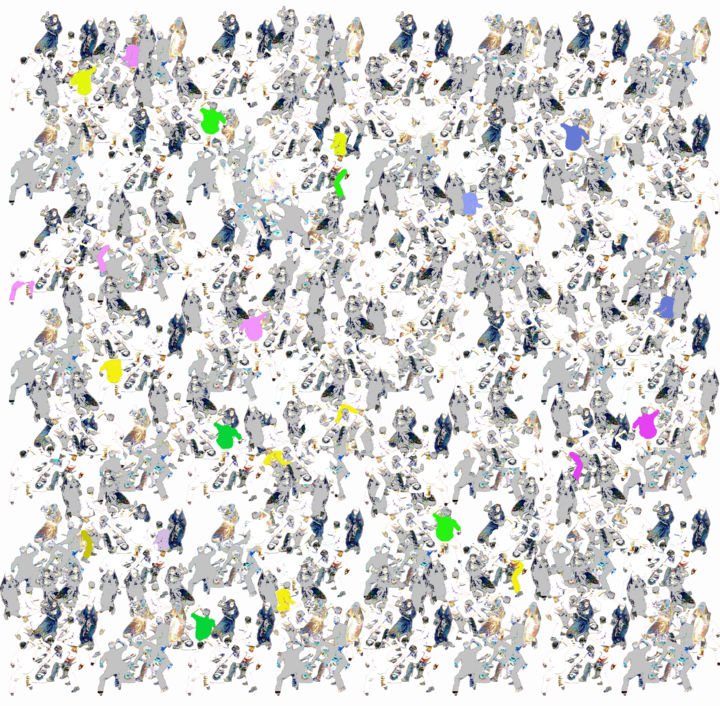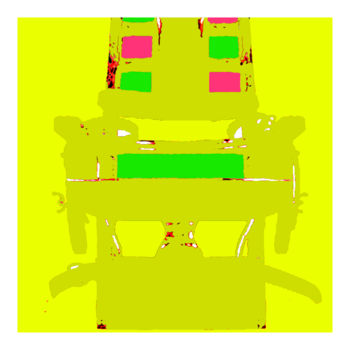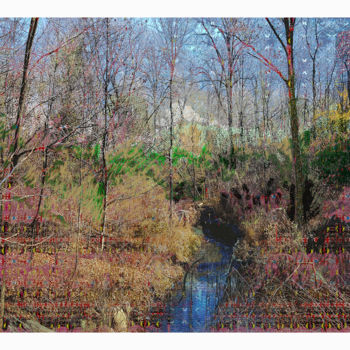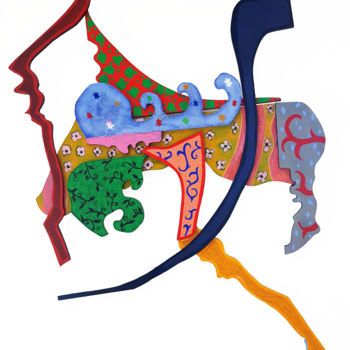carnival in Iran (2009) Arts numériques par Antonio Vargas
Pas à Vendre
Vendu par Antonio Vargas
Cette image est disponible pour téléchargement avec une licence
Vendu par Antonio Vargas
-
Édition limitée (n°20/30)
Arts numériques,
Travail numérique 2D
/
Photo montage
/
Peinture numérique
sur Papier
- Dimensions Hauteur 35,4in, Largeur 35,4in
- Encadrement Cette oeuvre n'est pas encadrée
- Catégories Arts numériques à moins de 1 000 $US Abstrait Politique
This work continue my research about the grotesque in contemporary art and was show at Chromart Magazine ( Berlin/Germany ) from October 2021 and POP Art exhibition on Bougie Art Gallery (Canada) in November 2021.
All works this serial group has limited copies.
For many years the theme of violence and sex emerged in my work and, except in some periods of greater formal experimentalisms, this theme has been constant to this day. Over time, more and more, I have been exploring aesthetic strategies so that both themes can be perceived only in the background of the observer's gaze when they are, in fact, always in forefront. On the images produced by me the appropriation and manipulation of digital images picked up via the internet is the way to build a new art works where violence and sex are present but hidden. Sometimes I do this with the use of strong colors, with a POP aesthetic, others by hiding the theme amid an abstract or romantic appearance. I believe that these strategies of concealment of themes, as a paradox as it may seem, are necessary to give conceptual consistency to the art work.
The first is related to the discussions and speeches that these themes produce in those exposed to my work. As we know, sex and violence are not human cultural creations because they belong to nature, but what are cultural creations are the speeches that the human being uses to justify the practices of sex and violence that it performs. As a consequence, when the observer perceives one or both of these themes in my work they always express an opinion that reveals very much of the cultural values they have. In other words, the observer comes out of a passive and comfortable position and reveals themselves. They become active, exposing themselves, building, and adding to the various meanings of the work.
The second reason is more complex. Since the beginning of prehistory, the image expresses and creates culture, but after the emergence of reproduction technologies, the image has increasingly gained a decisive role in the strategies of conquest and maintenance of the different types of power. In the specific case of images of violence, its use stimulates, in the observer, the fear that this violence will reach them in particular. With this, states and their governments can more easily justify the acts of violence they commit on civil society or other states and governments.
Now, after the advent of photography and the various mass media, including all those arising with the Internet, the volume of images – of all kinds, but especially of violence – grew in such a dimension that the perception of the theme was trivialized. As a result, the perception of cultural violence became naturalized. It does not surprise us, it does not bother us as it should, because we assume that it is a natural part of human coexistence, we forget that violence practiced for power is cultural. We do not condemn, as we should, the various forms of violence that the state engages in because we also consider that they are intrinsic to the functioning of states when they are not.
On the other hand, the dissemination of sexual images also grew impressively. But although we know that sex is something natural in human coexistence, I do not believe that the general understanding of sex has actually become naturalized or trivialized. This is, in my opinion, a pity, as I believe it would allow for a much more peaceful and rich coexistence between people with different sexual behaviors. A possible explanation for this may be the fact that, culturally, sex belongs to the scope of private life, whereas violence belongs to the scope of public life. Sex, on the other hand, belongs to the private life and when the person who practices it tries to publicly justify their sexual choices and practices, they usually receive censure from society. In other words: Violence in the private life is not allowed to be justified, which is correct, but violence practiced for power in the public life can be easily justified, which I do not consider correct. Sex, which is of the private life, is accepted, but its justification in the public life is censored, which seems, to me, wrong. The conclusion, in my view, is that our society represses sexual freedom while also being condescending to the various forms of public practices of violence that Power practices.
As images of both themes flood our daily lives but produce opposite discourses of acceptance in public life, I use several strategies to make these themes not perceived in a first look by the observer. That is because I believe that being perceived only later, their reaction will be more intense and their speeches longer.
The appropriation of images (copy/paste) to create artistic works is an old phenomenon, but the emergence of the digital image in contemporaneity – especially after the emergence of the internet – enhances the possibilities of appropriation. This practice provokes discussions about ways of doing, about copyright, originality, copying, transgression. At the same time, new forms of broadcasting change the public's reception and redimension the concept of art.
Thèmes connexes
I was born in Brasil, estudied in Spain e do exhibitions in several countries. For many years the theme of violence and sex emerged in my work and, except in some periods of greater formal experimentalisms, this theme has been constant to this day. Over time, more and more, I have been exploring aesthetic strategies so that both themes can be perceived only in the background of the observer's gaze when they are, in fact, always in forefront. On the images produced by me the appropriation and manipulation of digital images picked up via the internet is the way to build a new art works where violence and sex are present but hidden. Sometimes I do this with the use of strong colors, with a POP aesthetic, others by hiding the theme amid an abstract or romantic appearance. I believe that these strategies of concealment of themes, as a paradox as it may seem, are necessary to give conceptual consistency to the art work.
-
Nationalité:
BRÉSIL

- Date de naissance : 1961
- Domaines artistiques: Oeuvres d’artistes professionnels,
- Groupes: Artiste professionnel Artistes Contemporains Brésiliens









